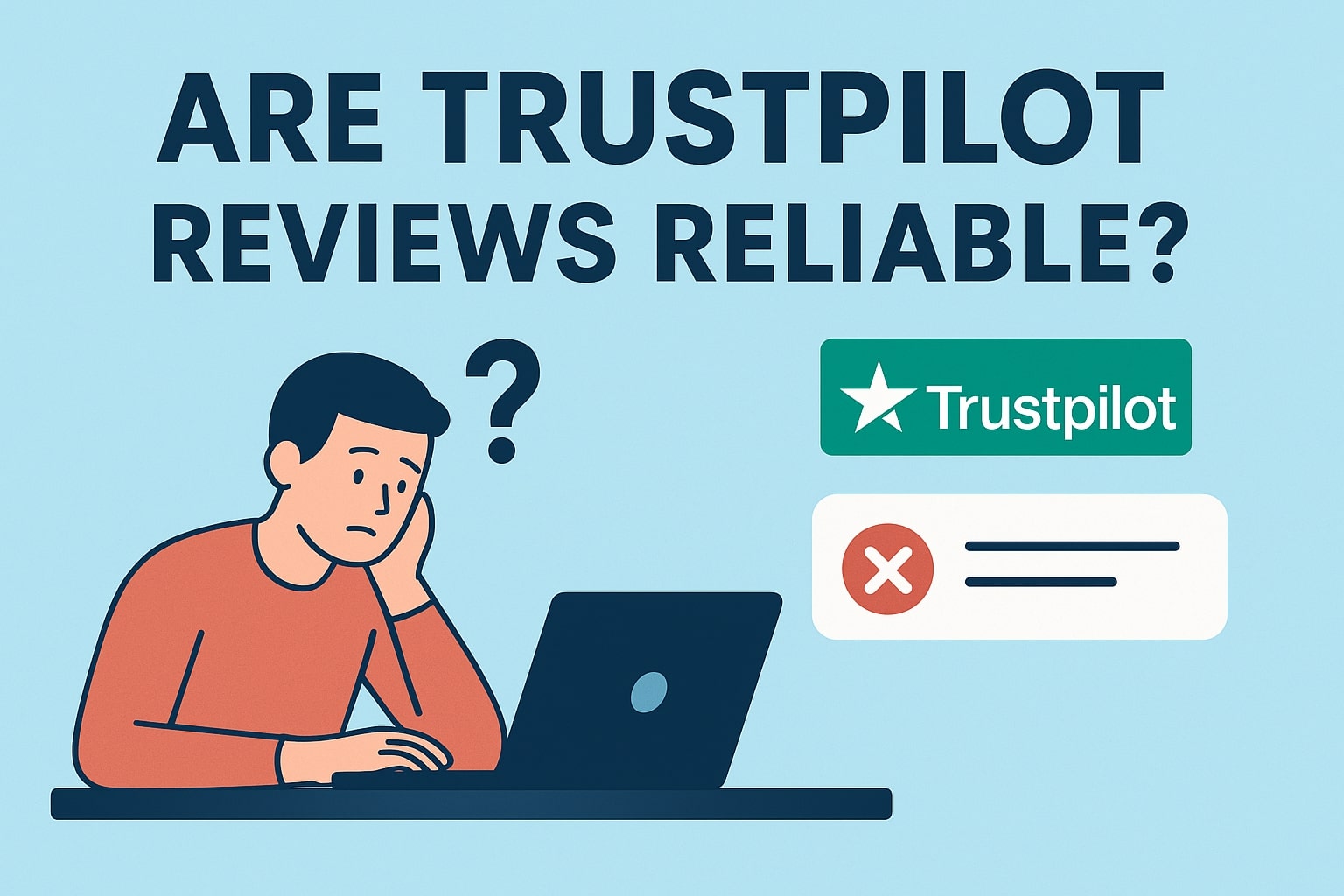When it comes to online reviews, Trustpilot is one of the first names that comes to mind. With millions of reviews published across countless industries, it has established itself as a global giant in the reputation management space.
But as more consumers rely on reviews to make purchasing decisions, an important question arises: Are Trustpilot reviews actually reliable?
In this article, we’ll explore both sides of the story—acknowledging Trustpilot’s influence while also highlighting areas that leave many people questioning how fair and transparent the platform really is.
🤔 Why Trust Matters More Than Ever
We’ve said it before in Why Transparency Matters—in 2025, consumers demand honesty from the brands they interact with. Reviews play a huge role in that trust-building process, which means the platforms hosting those reviews carry significant responsibility.
If a review site filters, edits, or removes reviews unfairly, the entire system risks breaking down. For businesses, this could mean paying for a reputation they didn’t earn. For customers, it could mean making decisions based on incomplete or biased information.
🏆 Trustpilot’s Strengths
Before diving into the criticisms, let’s be fair—Trustpilot does have clear strengths that have contributed to its global reputation:
- Brand recognition: With more than a decade of operation, Trustpilot is widely known and often the default choice for businesses.
- Massive volume of reviews: The sheer scale of the platform creates an impression of legitimacy.
- Legal action against fake reviews: Trustpilot frequently highlights a legal victory it had against a company selling fake reviews. On the surface, this signals a commitment to protecting authenticity.
However, the question is not whether Trustpilot has strengths, but whether these strengths are matched by fair practices across the board.
💳 The Paid Plan Question
One of the most common concerns raised by both consumers and businesses is whether Trustpilot favors companies on paid plans.
Many users have shared experiences of negative reviews disappearing—sometimes after a company upgraded its account. While Trustpilot officially states that paying customers cannot buy their way out of bad feedback, the optics often tell a different story.
For example:
- Some businesses claim that reviews they flagged as fake were ignored until they became paying clients.
- Others report that negative reviews about premium-paying companies were removed quickly, while similar reviews about free-tier businesses remained.
To be clear, there’s no official proof that Trustpilot directly manipulates reviews based on payment. But the perception exists—and in reputation management, perception is often reality.
⚖️ The Legal Case: Marketing or Mission?
Trustpilot often cites its legal action against a company selling fake reviews as proof of its commitment to authenticity. On paper, this sounds impressive—it shows the platform is willing to defend the integrity of online reviews in court.
But here’s the question: How often do they take this kind of action?
Critics argue that this case, while significant, is also heavily promoted in Trustpilot’s marketing materials. Instead of being part of an ongoing campaign against fake reviews, it feels more like a symbolic victory—a way to reassure users and businesses of legitimacy without addressing deeper, systemic issues.
In other words, was this lawsuit about protecting consumers, or was it a public relations strategy?
🔍 The Transparency Gap
Transparency is the cornerstone of trustworthy reviews. Yet, Trustpilot’s processes around review removal and moderation remain somewhat unclear.
- Who decides if a review should be removed?
- What criteria are applied?
- How much influence do paying companies have?
These unanswered questions make it difficult for both businesses and customers to fully trust the system. Compare this to platforms like Rated Stores, where transparency is emphasized and all reviews are shown—good or bad.
📉 The Consumer Perspective
For everyday shoppers, Trustpilot’s scale makes it tempting to rely on. But if reviews can be influenced by commercial relationships, customers risk making choices based on skewed information.
Studies show that 77% of consumers read online reviews before making a purchase, and 60% say negative reviews make them more likely to trust a brand. If platforms suppress or remove too many negative reviews, they distort the consumer decision-making process.
📈 The Business Perspective
For businesses, Trustpilot can be a double-edged sword:
- Pros: Visibility, brand credibility, and access to a huge review platform.
- Cons: Costly paid plans, potential bias, and limited control over how reviews are displayed.
Many small businesses struggle to compete with larger, paid Trustpilot clients. This creates a situation where the “trust economy” may favor those with deeper pockets—raising questions about fairness.
🚪 Alternatives to Trustpilot
If Trustpilot’s reliability is questionable, what are the alternatives?
- Rated Stores: Focused on transparency, ensuring all reviews are published and none are hidden.
- Google Reviews: Integrated into search results, providing visibility without extra costs.
- Yelp (in certain markets): Still widely used for local businesses.
By diversifying where customers can leave feedback, businesses protect themselves from becoming too reliant on one platform’s rules.
🧭 Key Takeaways
- Trustpilot has undeniable strengths: scale, recognition, and a history of fighting fake reviews.
- However, concerns persist about paid plan favoritism and whether legal actions are more about PR than principle.
- Transparency remains the missing link—without clear processes, users are left questioning the platform’s fairness.
- Alternatives like Rated Stores aim to fill this gap by putting openness at the center.
📝 Final Thoughts
So, are Trustpilot reviews reliable? The answer is complicated.
On one hand, the platform provides a massive volume of feedback that can be genuinely useful. On the other, questions about fairness, bias, and transparency make it difficult to say with confidence that consumers always get the full picture.
The truth is this: trust is fragile. Once doubts creep in, they’re hard to ignore. Businesses and consumers alike should look beyond just one platform, and seek out review systems that are as transparent as the brands they hope to represent.
